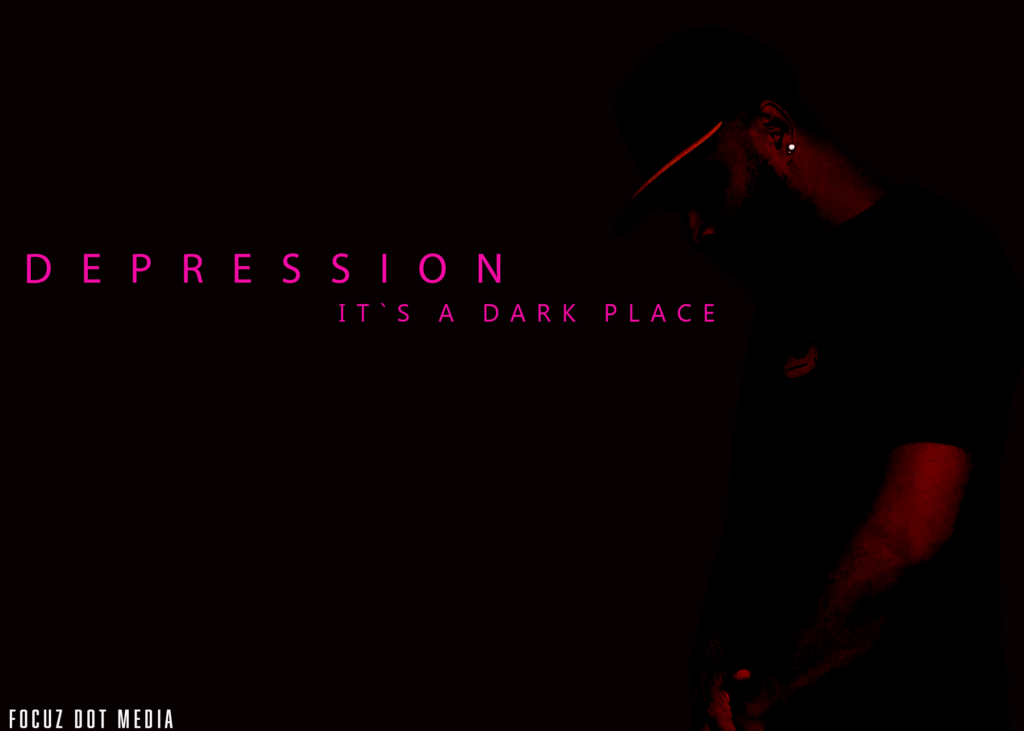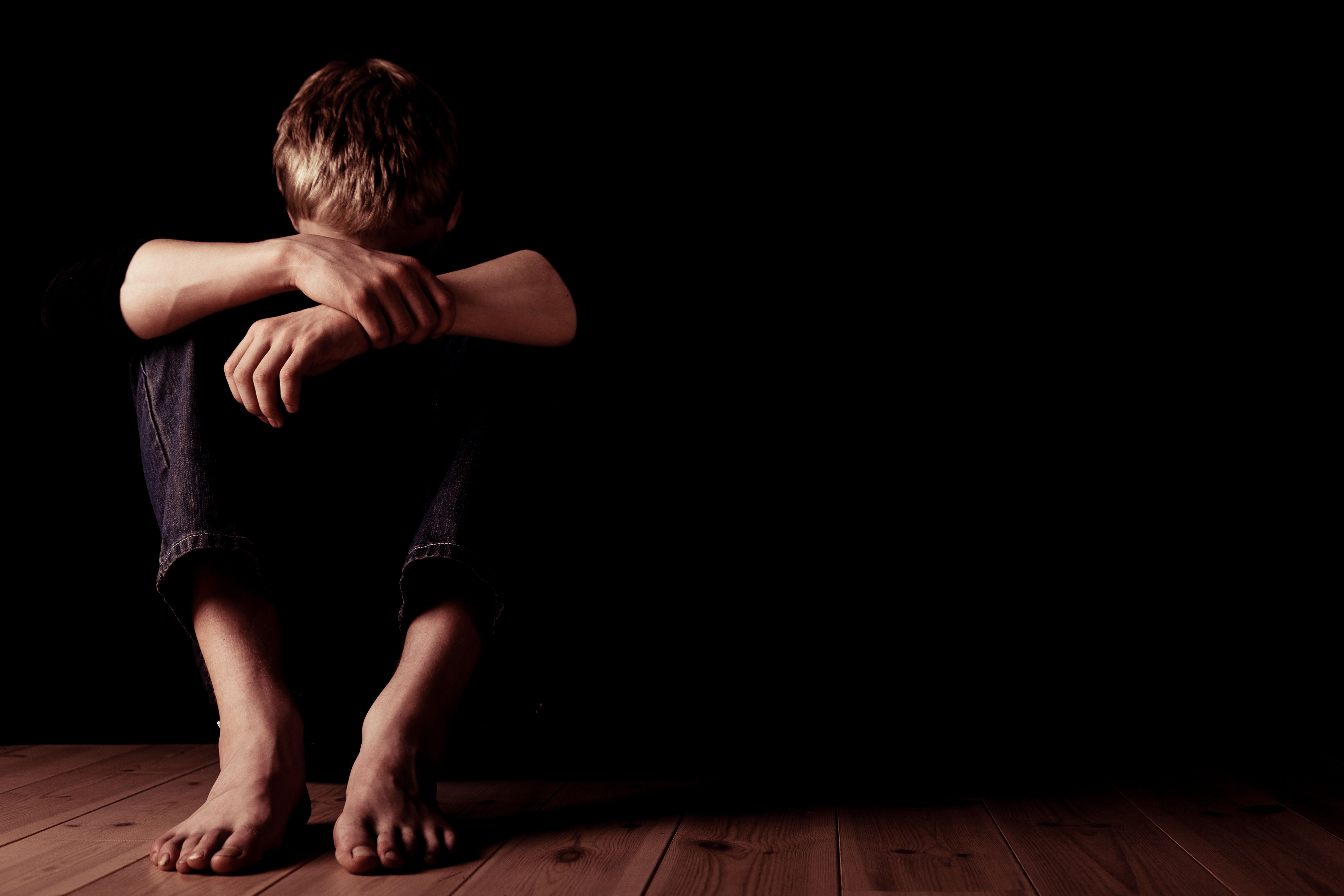So much pain and no one pays you attention always putting you off, family turns away from you, you have no friends, having the feeling of being all alone, no one to talk to at all, you’re ugly can’t get a date or get into any type relationship, people look right through you as you are a piece of glass as they walk by you, everyone’s enjoying life but you. I know this because this is me…..
Depression (major depressive disorder) is a common and serious medical illness that negatively affects how you feel, the way you think and how you act. Fortunately, it is also treatable. Depression causes feelings of sadness and/or a loss of interest in activities you once enjoyed. It can lead to a variety of emotional and physical problems and can decrease your ability to function at work and at home.
Depression symptoms can vary from mild to severe and can include:
- Feeling sad or having a depressed mood
- Loss of interest or pleasure in activities once enjoyed
- Changes in appetite — weight loss or gain unrelated to dieting
- Trouble sleeping or sleeping too much
- Loss of energy or increased fatigue
- Increase in purposeless physical activity (e.g., inability to sit still, pacing, handwringing) or slowed movements or speech (these actions must be severe enough to be observable by others)
- Feeling worthless or guilty
- Difficulty thinking, concentrating or making decisions
- Thoughts of death or suicide
Buc- Tuffa, JayOne 3, KaSandra Dee, Mr.Abdul Black
TITTLE TRACK PAIN

Symptoms must last at least two weeks and must represent a change in your previous level of functioning for a diagnosis of depression.
Also, medical conditions (e.g., thyroid problems, a brain tumor or vitamin deficiency) can mimic symptoms of depression so it is important to rule out general medical causes.
Depression affects an estimated one in 15 adults (6.7%) in any given year. And one in six people (16.6%) will experience depression at some time in their life. Depression can occur at any time, but on average, first appears during the late teens to mid-20s. Women are more likely than men to experience depression. Some studies show that one-third of women will experience a major depressive episode in their lifetime. There is a high degree of heritability (approximately 40%) when first-degree relatives (parents/children/siblings) have depression.
Depression Is Different From Sadness or Grief/Bereavement
The death of a loved one, loss of a job or the ending of a relationship are difficult experiences for a person to endure. It is normal for feelings of sadness or grief to develop in response to such situations. Those experiencing loss often might describe themselves as being “depressed.”
But being sad is not the same as having depression. The grieving process is natural and unique to each individual and shares some of the same features of depression. Both grief and depression may involve intense sadness and withdrawal from usual activities. They are also different in important ways:
- In grief, painful feelings come in waves, often intermixed with positive memories of the deceased. In major depression, mood and/or interest (pleasure) are decreased for most of two weeks.
- In grief, self-esteem is usually maintained. In major depression, feelings of worthlessness and self-loathing are common.
- In grief, thoughts of death may surface when thinking of or fantasizing about “joining” the deceased loved one. In major depression, thoughts are focused on ending one’s life due to feeling worthless or undeserving of living or being unable to cope with the pain of depression.
Grief and depression can co-exist For some people, the death of a loved one, losing a job or being a victim of a physical assault or a major disaster can lead to depression. When grief and depression co-occur, the grief is more severe and lasts longer than grief without depression.
Distinguishing between grief and depression is important and can assist people in getting the help, support or treatment they need.
Risk Factors for Depression
Depression can affect anyone—even a person who appears to live in relatively ideal circumstances.
Several factors can play a role in depression:
- Biochemistry: Differences in certain chemicals in the brain may contribute to symptoms of depression.
- Genetics: Depression can run in families. For example, if one identical twin has depression, the other has a 70 percent chance of having the illness sometime in life.
- Personality: People with low self-esteem, who are easily overwhelmed by stress, or who are generally pessimistic appear to be more likely to experience depression.
- Environmental factors: Continuous exposure to violence, neglect, abuse or poverty may make some people more vulnerable to depression.
How Is Depression Treated?
Depression is among the most treatable of mental disorders. Between 80% and 90% percent of people with depression eventually respond well to treatment. Almost all patients gain some relief from their symptoms.
Before a diagnosis or treatment, a health professional should conduct a thorough diagnostic evaluation, including an interview and a physical examination. In some cases, a blood test might be done to make sure the depression is not due to a medical condition like a thyroid problem or a vitamin deficiency (reversing the medical cause would alleviate the depression-like symptoms). The evaluation will identify specific symptoms and explore medical and family histories as well as cultural and environmental factors with the goal of arriving at a diagnosis and planning a course of action.
Medication: Brain chemistry may contribute to an individual’s depression and may factor into their treatment. For this reason, antidepressants might be prescribed to help modify one’s brain chemistry. These medications are not sedatives, “uppers” or tranquilizers. They are not habit-forming. Generally antidepressant medications have no stimulating effect on people not experiencing depression.
Antidepressants may produce some improvement within the first week or two of use yet full benefits may not be seen for two to three months. If a patient feels little or no improvement after several weeks, his or her psychiatrist can alter the dose of the medication or add or substitute another antidepressant. In some situations other psychotropic medications may be helpful. It is important to let your doctor know if a medication does not work or if you experience side effects.
Overview
Depression (major depressive disorder or clinical depression) is a common but serious mood disorder. It causes severe symptoms that affect how you feel, think, and handle daily activities, such as sleeping, eating, or working. To be diagnosed with depression, the symptoms must be present for at least two weeks.
Some forms of depression are slightly different, or they may develop under unique circumstances, such as:
- Persistent depressive disorder (also called dysthymia) is a depressed mood that lasts for at least two years. A person diagnosed with persistent depressive disorder may have episodes of major depression along with periods of less severe symptoms, but symptoms must last for two years to be considered persistent depressive disorder.
- Postpartum depression is much more serious than the “baby blues” (relatively mild depressive and anxiety symptoms that typically clear within two weeks after delivery) that many women experience after giving birth. Women with postpartum depression experience full-blown major depression during pregnancy or after delivery (postpartum depression). The feelings of extreme sadness, anxiety, and exhaustion that accompany postpartum depression may make it difficult for these new mothers to complete daily care activities for themselves and/or for their babies.
- Psychotic depression occurs when a person has severe depression plus some form of psychosis, such as having disturbing false fixed beliefs (delusions) or hearing or seeing upsetting things that others cannot hear or see (hallucinations). The psychotic symptoms typically have a depressive “theme,” such as delusions of guilt, poverty, or illness.
- Seasonal affective disorder is characterized by the onset of depression during the winter months, when there is less natural sunlight. This depression generally lifts during spring and summer. Winter depression, typically accompanied by social withdrawal, increased sleep, and weight gain, predictably returns every year in seasonal affective disorder.
- Bipolar disorder is different from depression, but it is included in this list is because someone with bipolar disorder experiences episodes of extremely low moods that meet the criteria for major depression (called “bipolar depression”). But a person with bipolar disorder also experiences extreme high – euphoric or irritable – moods called “mania” or a less severe form called “hypomania.”
Self-treatment
Major depression is a medical condition that is best treated by a health professional. Getting physical exercise, reducing alcohol intake, avoiding substance abuse, and engaging with friends and family may also help.
Seeking medical care Seek emergency help if you Have suicidal thoughts Might harm yourself or others Make an appointment to see a doctor if you Feel depressed.
Bipolar II disorder
A type of bipolar disorder characterized by depressive and hypomanic episodes.It involves at least one depressive episode lasting at least two weeks and at least one hypomanic episode lasting at least four days.Depressive symptoms include sadness or hopelessness. Hypomanic symptoms include a persistently elevated or irritable mood.Treatment includes counseling and medications, such as mood stabilizers.

Had a heart attack, stent or bypass procedure? You may still be at risk.


FREE AD SPACE

The first and only NMDA receptor antagonist approved for 2 subtypes of MDD in adult patients1


Seasonal affective disorder occurs in climates where there is less sunlight at certain times of the year.
Symptoms include fatigue, depression, hopelessness, and social withdrawal.
Treatment includes light therapy (phototherapy), talk therapy, and medications.
Very common More than 3 million US cases per year Treatable by a medical professiona lMedium-term: resolves within months Usually self-diagnosable Lab tests or imaging not required For informational purposes only. Consult your local medical authority for advice.
Climate depression is real. And it is spreading fast among our youth
1 in 3 College Freshmen Has Depression, Anxiety
Starting college can be a time of fun, new experiences and growth. Yet it can also be a rough transition for many students who struggle with mental health issues.
A new study from researchers in the United Kingdom and Canada found about one-third of first-year students have or develop moderate to severe anxiety or depression.
When these young adults had increasing use of illicit drugs, they had greater odds of developing high levels of anxiety or depression. Yet if they were more socially active, their mental health tended to be better.
While the research involved college freshmen in Canada, experts say the findings also apply to college students in the United States.

“We’ve been seeing that the mental health of college students has been deteriorating,” said Dr. Rachel Conrad, director of young adult mental health at Brigham and Women’s Hospital in Boston. She was not involved in the study.
“Prior to the [COVID-19] pandemic, alcohol use had been decreasing, but stress, depression, anxiety, trauma and suicidal thoughts had been increasing. And then during the pandemic, alcohol use increased significantly in the college-age population as well,” Conrad said.
Teens are experiencing an increasing number of suicides, as well as a rise in anxiety, specifically social anxiety, Conrad said.
The study was led by Kiera Louise Adams, a doctoral student at the University of Oxford in England. She and her colleagues analyzed nearly 1,700 responses from a survey of first-year undergraduates at a public Canadian university taken in September 2018 and in March 2019.

Participants answered questions about parental education, early life adversity and lifetime occurrence of mood and anxiety disorders. The researchers assessed the amount and frequency of alcohol use, sleeping pills and stimulants that had not been prescribed, cannabis, painkillers, opiates, psychedelics and other recreational drugs the students were using. These measures were rated on a scale.

About 32% of respondents had anxiety at the start of the academic year and 27% had depressive symptoms. Six months later, 37% of students had anxiety symptoms and 33% experienced depressive symptoms.
Social engagement helps
Students who had a history of internalizing disorders, such as anxiety and depression, when they began were almost four times as likely not to recover from significant levels of anxiety/depressive symptoms as those without that history, according to the research. Conversely, students who felt connected to university life and their peers had greater odds of recovering.
For every one point in connectedness students had, they had 10% to 6% lower odds of developing anxiety or depression. Every 1-point increase in drug use meant 16% higher odds of developing clinically significant depressive or anxiety symptoms.
Loneliness is a significant risk factor, both for physical and mental health, and some studies show that loneliness is actually more dangerous to a person’s physical well-being than obesity, Conrad said.
Beware of an Unexpected Calmness in our Patients and Others

“Tragedies should not be deemed senseless.” Now I have another word—really, words—that can not only be very misleading, but dangerous to misinterpret.
As written about recently in the Washington Post in the article “Michigan Schools order investigation after staff raised alarms about suspect hours before fatal shooting,”2 the superintendent was quoted as saying that the school counselors did not take action against the perpetrator in large part because he “appeared calm” after a discussion about his graphic drawing of blood and gunshot wounds.
Unfortunately, appearing calm for no clear and meaningful reason is generally not a good sign in the midst of psychological turmoil. Too often, it is a reflection of someone in distress who has decided to commit homicide or suicide, with an ensuing sense of relief in the decision. In this case, it was homicide.
In another case back in the news, it was a case of suicide. Again in the Washington Post, there was a long article titled “Jamie Raskin’s year of grief and purpose.”3 At the end of December, 2020, Representative Rep. Raskin recalled that his son, who had long been suffering from clinical depression, did not seem depressed and upset. Rather, “it was a sign of serene calm.” Now, almost a year after the suicide, Raskin wrenchingly recognizes that it was a sign of something going awry—that his son had indeed decided to commit suicide and did not want to be talked out of it. Interestingly enough, the article conveys that his son saw his long-term psychiatrist the day before he died, but the psychiatrist did not have any increased concern and was astonished like everyone else.










More Stories
Susan Aquila The Goddess of Metal and Classical Rock
First and only fire station in Denver to be staffed by all African American firefighters
Why Are So Many Venezuelans Going to the United States?